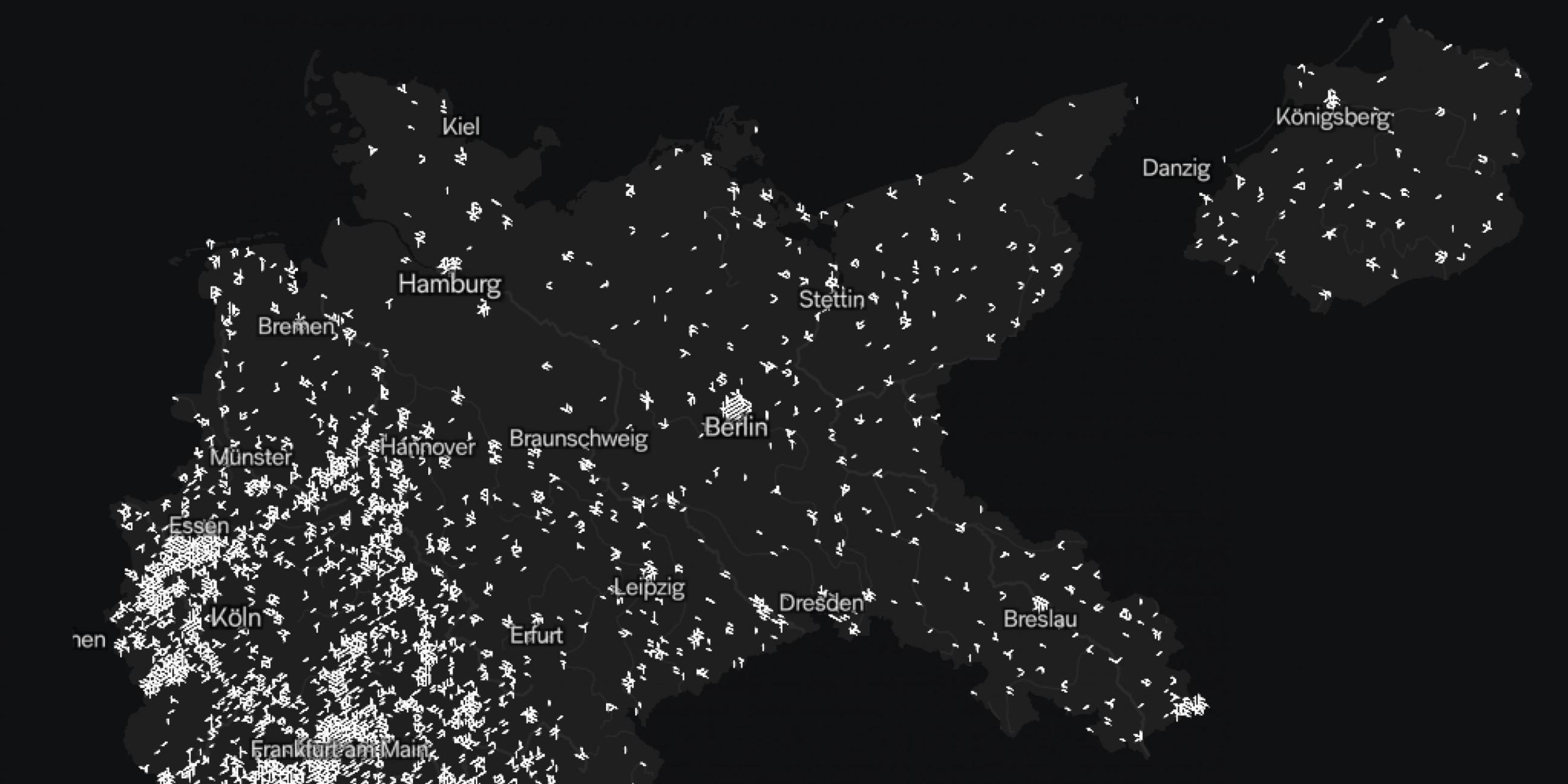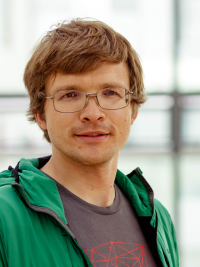Topography of Violence
Research cooperation with the Jewish Museum Berlin on the visualisation of anti-Semitic acts of violence between 1930 and 1938

- Jewish Museum Berlin
The project addressed the question of how spatio-temporal data on the violent attacks against Jews and Jewish institutions and businesses between 1930 and 1938 can be visualised. The underlying research work dealt with ethical and appropriate data visualisation on a theoretical level in order to test the implementation of such visualisation in the new permanent exhibition of the Jewish Museum on a practical level in cooperation with the Jewish Museum Berlin and with the collaboration of the House of the Wannsee Conference. The results are an animated wall map and an interactive media station, which can be seen in the permanent exhibition of the Jewish Museum, as well as a public web application.
The project is linked to current historical research, which sheds light on the "spontaneous" manifestations of growing anti-Semitism before the Holocaust. From as early as 1930, but especially from 1933 to 1938, the Nazis used racist defamation, anti-Semitic legislation and violent attacks to threaten Jews at a local level and exclude them from social, economic and cultural life. The violence, which took place in multiple phases, meant that Jewish life in many of the original 2,000 communities in the German Reich was almost completely suppressed by 1938.
The visualisation of the underlying data set does not show a complete and exhaustive survey, but provides an overview of the places and times of the acts of violence as well as the perpetrators. The targets of the violent offences are divided into three categories: Individuals, Jewish institutions (synagogues, cemeteries, community and private institutions) and businesses (companies and shops). Visitors can take a closer look at the data on which the animation is based and research specific locations, dates or groups of perpetrators. Users of the website are also invited to expand the database and enrich it with their own knowledge about local cases of violent offences.
Project Management & Team
Management

Prof. Dr. Marian Dörk
Project Team FHP
- Fabian Ehmel
- Viktoria Brüggemann
- Prof. Dr Marian Dörk
Project Team JMB
- Sabrina Akermann
- Sarah Binz
- Michael Dorrmann
- Dagmar Ganßloser
- Mischa Geiger
- Etta Grotrian
- Aubrey Pomerance
- Franziska Schurr